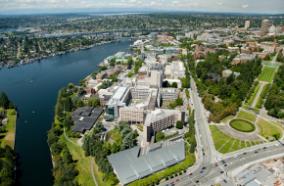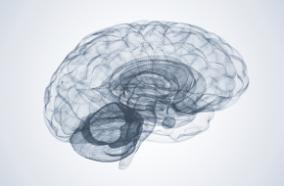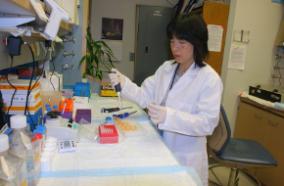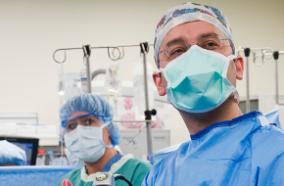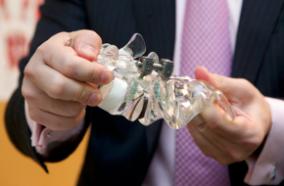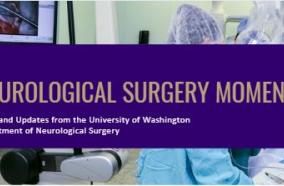5 years ago
Related Articles
Strategies for writing a successful National Institutes of Health grant proposal for the early-career neurointerventionalist.
J Neurointerv Surg. 2020 Nov 25;:
Authors: Kan P, Mokin M, Mack WJ, Starke RM, Sheth KN, Albuquerque FC, Levitt MR
Abstract
OBJECTIVE: The goal of this article is to provide a succinct review of the key components of a NIH grant application and the NIH reviewprocess for the early career neurointerventionalist.
METHODS: The authors reviewed NIH rules and regulations and also reflected on their own collective experiencein writing NIH grant proposals in the area of cerebrovascular disease andneurointerventional surgery.
RESULTS: Key components of theresearch strategy include specific aims, significance, innovation and approach.The specific aims page is the most important page of the application and should be written first. The NIH review isbased on these key components along with an assessment of the appropriatenessof the investigators and environment for the research.
CONCLUSION: Detailed knowledge ofthe key components of the research grant is critical to a successful application.The information in the article may aid in the grant writing for early careerneurointerventionalists.
PMID: 33239307 [PubMed - as supplied by publisher]
5 years ago
Related Articles
National Institutes of Health grant opportunities for the neurointerventionalist: preparation and choosing the right mechanism.
J Neurointerv Surg. 2020 Nov 25;:
Authors: Kan P, Levitt MR, Mack WJ, Starke RM, Sheth KN, Albuquerque FC, Mokin M
Abstract
OBJECTIVE: The goal of this article is to provide recommendations for the early career neurointerventionalist in writing a successful grant application to the National Institutes of Health (NIH) and similar funding agencies.
METHODS: The authors reviewed NIH rules and regulations and also reflected on their own collective experience in writing NIH grant proposals in the area of cerebrovascular disease and neurointerventional surgery.
RESULTS: A strong proposal should address an important scientific problem where there is a gap in knowledge. The solution offered needs to be innovative but at the same time based on a strong scientific premise. The proposed research must be feasible to implement and investigate in the researcher's environment.
CONCLUSION: Successful grant writing is critical in funding and enhancing research. The information in the article may aid in the preparation stage of grant writing for early career neurointerventionalists.
PMID: 33239308 [PubMed - as supplied by publisher]
5 years ago
Related Articles
Rodent and fly models in behavioral neuroscience: an evaluation of methodological advances, comparative research, and future perspectives.
Neurosci Biobehav Rev. 2020 Nov 23;:
Authors: Moulin TC, Covill LE, Itskov PM, Williams MJ, Schiöth HB
Abstract
The assessment of behavioral outcomes is a central component of neuroscientific research, which has required continuous technological innovations to produce more detailed and reliable findings. In this article, we provide an in-depth review on the progress and future implications for three model organisms (mouse, rat, and Drosophila) essential to our current understanding of behavior. By compiling a comprehensive catalog of popular assays, we are able to compare the diversity of tasks and usage of these animal models in behavioral research. This compilation also allows for the evaluation of existing state-of-the-art methods and experimental applications, including optogenetics, machine learning, and high-throughput behavioral assays. We go on to discuss novel apparatuses and inter-species analyses for centrophobism, feeding behavior, aggression and mating paradigms, with the goal of providing a unique view on comparative behavioral research. The challenges and recent advances are evaluated in terms of their translational value, ethical procedures, and trustworthiness for behavioral research.
PMID: 33242563 [PubMed - as supplied by publisher]
5 years ago
Related Articles
Reply to Wenzel and Kubiak: Neuroticism is best defined by mean levels of negative emotion, not emotional variability.
Proc Natl Acad Sci U S A. 2020 12 29;117(52):32859-32860
Authors: Kalokerinos EK, Murphy SC, Koval P, Mestdagh M, Bastian B, Kuppens P
PMID: 33234570 [PubMed - indexed for MEDLINE]
5 years ago
Related Articles
Phenotypic characterization with somatic genome editing and gene transfer reveals the diverse oncogenicity of ependymoma fusion genes.
Acta Neuropathol Commun. 2020 Nov 23;8(1):203
Authors: Takadera M, Satomi K, Szulzewsky F, Cimino PJ, Holland EC, Yamamoto T, Ichimura K, Ozawa T
Abstract
Recurrent RELA and YAP1 fusions are intimately associated with tumorigenesis in supratentorial ependymomas. Chromothripsis and focal copy number alterations involving 11q are hallmarks of these tumors. However, it is unknown whether the chromosomal alterations are a direct causal event resulting in fusion transcripts. In addition, the biological significance of the RELA fusion variants and YAP1 fusions is not yet fully characterized. In this study, we generated gene rearrangements on 11q with the CRISPR/Cas9 system and investigated the formation of oncogenic ependymoma fusion genes. Further, we examined the oncogenic potential of RELA fusion variants and YAP1 fusions in a lentiviral gene transfer model. We observed that endogenous RELA fusion events were successfully induced by CRISPR/Cas9-mediated genome rearrangement in cultured cells. In vivo genome editing in mouse brain resulted in the development of ependymoma-like brain tumors that harbored the Rela fusion gene. All RELA fusion variants tested, except a variant lacking the Rel homology domain, were able to induce tumor formation, albeit with different efficacy. Furthermore, expression of YAP1-FAM118B and YAP1-MAMLD1 fusions induced the formation of spindle-cell-like tumors at varying efficacy. Our results indicate that chromosomal rearrangements involving the Rela locus are the causal event for the formation of Rela fusion-driven ependymomas in mice. Furthermore, the type of RELA. fusion might affect the aggressiveness of tumors and that the Rel homology domain is essential for the oncogenic functions of RELA. fusions. The YAP1 fusion genes are also oncogenic when expressed in mice.
PMID: 33228790 [PubMed - in process]
5 years ago
Related Articles
The only difference between a jail and a psychiatric hospital is a pillow.
Schizophr Res. 2020 Nov 19;:
Authors: Williams MJ
Abstract
This is an article looking at the problems I have noticed in psychiatric hospitals as a patient with schizophrenia.
PMID: 33223348 [PubMed - as supplied by publisher]
5 years ago
Related Articles
Development of a robust crystallization platform for immune receptor TREM2 using a crystallization chaperone strategy.
Protein Expr Purif. 2020 Nov 19;:105796
Authors: Byrne NJ, Lee AC, Kostas J, Reid JC, Partridge AT, So SS, Cowan JE, Abeywickrema P, Huang H, Zebisch M, Barker JJ, Soisson SM, Brooun A, Su HP
Abstract
TREM2 has been identified by genomic analysis as a potential and novel target for the treatment of Alzheimer's disease. To enable structure-based screening of potential small molecule therapeutics, we sought to develop a robust crystallization platform for the TREM2 Ig-like domain. A systematic set of constructs containing the structural chaperone, maltose binding protein (MBP), fused to the Ig domain of TREM2, were evaluated in parallel expression and purification, followed by crystallization studies. Using protein crystallization and high-resolution diffraction as a readout, a MBP-TREM2 Ig fusion construct was identified that generates reproducible protein crystals diffracting at 2.0Å, which makes it suitable for soaking of potential ligands. Importantly, analysis of crystal packing interfaces indicates that most of the surface of the TREM2 Ig domain is available for small molecule binding. A proof of concept co-crystallization study with a small library of fragments validated potential utility of this system for the discovery of new TREM2 therapeutics.
PMID: 33221505 [PubMed - as supplied by publisher]
5 years ago
Related Articles
Anthracycline Cardiotoxicity in a Patient with Diffuse Large B-Cell Lymphoma: A Case Report.
Cureus. 2020 Oct 19;12(10):e11038
Authors: Teixeira da Silva F, Morais Passos R, Esteves A, Carvalho J, Ferreira M
Abstract
Cardiotoxicity is a relevant side effect of cancer therapy that leads to increased patient morbidity and mortality. It is fundamental to understand and remember it as a cause of disease since accurate and timely diagnosis is crucial. We present the case of a patient who developed chemotherapy-associated cardiac dysfunction after receiving treatment for a diffuse large B-cell lymphoma. Clinical history, echocardiography, and differential diagnosis led us to attribute her condition to heart failure (HF) due to early doxorubicin-induced cardiomyopathy. The patient outcome was favorable. We discuss the pathogenesis and incidence of anthracycline-induced cardiotoxicity as well as strategies for its detection, prevention, and treatment.
PMID: 33214965 [PubMed]
5 years ago
Related Articles
Geoffrey Burnstock - An accidental pharmacologist.
Biochem Pharmacol. 2020 Oct 23;:114300
Authors: Di Virgilio F, Jacobson KA, Williams M
Abstract
Geoffrey Burnstock, the founder of the field of purinergic signaling research passed away in Melbourne, Australia on June 3rd, 2020, at the age of 91. With his death, the world of biomedical research lost one of its most passionate, creative and unconventional thought leaders. He was an inspiration to the many researchers he interacted with for more than 50 years and a frequent irritation to those in the administrative establishment. Geoff never considered himself a pharmacologist having being trained as a zoologist and becoming an autonomic neurophysiologist based on his evolving interests in systems and disease-related research. By the end of his life he had: published some 1550 papers; been cited more than 125,000 times; had an h-index of 156 and had supervised over 100 Ph.D. students. His indelible legacy, based on a holistic, data-based, multidisciplinary, unconventional "outside the box" approach to research was reflected in two of the seminal findings in late 20th century biomedical research: the purinergic neurotransmitter hypothesis and the concept of co-neurotransmission, both of which were initially received by his peers with considerable skepticism that at times verged on disdain. Nonetheless, while raising hackles and threatening the status quo, Geoff persevered and prevailed, becoming a mentor for several generations of biomedical researchers. In this review we provide a joint perspective on Geoff Burnstock's legacy in research.
PMID: 33203518 [PubMed - as supplied by publisher]
5 years ago
Related Articles
Transcirculation approach for stent-assisted coiling of intracranial aneurysms: a multicenter study.
J Neurointerv Surg. 2020 Nov 17;:
Authors: Mascitelli JR, Levitt MR, Griessenauer CJ, Kim LJ, Gross B, Abla A, Winkler E, Jankowitz B, Grandhi R, Goren O, Schirmer CM
Abstract
BACKGROUND: The transcirculation approach (TCA) for stent-assisted coiling (SAC) of intracranial aneurysms may be useful for certain wide-neck bifurcation aneurysms as well as those with acute-angle efferent branches.
OBJECTIVE: To describe a multicenter experience using the TCA for SAC.
METHODS: A multicenter, retrospective study (2016-2020) of aneurysm treatment using SAC via the TCA. Angiographic outcome was scored using the Raymond Scale (adequate occlusion 1 and 2), and clinical outcome was scored using a modified Rankin Scale (good outcome 0-2) RESULTS: Twenty-nine patients with 29 aneurysms were included (62.1% female; average age 61; 89.7% unruptured; 13.8% previously treated; average dome size 6.4 mm; average neck 4.4 mm). Aneurysm locations included internal carotid artery-fetal posterior cerebral artery (n=4), internal carotid artery terminus (n=4), anterior communicating artery (n=8), vertebral artery-posterior inferior cerebellar artery (n=2), and basilar tip (n=11). The TCA used communicating arteries (93.1%; average 1.6 mm), intermediate catheters (51.7%), jailing technique (62.1%), and staged procedures (10.3%). The most common stent was the Neuroform Atlas (Stryker; 69%). Immediate adequate occlusion was obtained in 75.9%, and five patients with inadequate occlusion progressed to adequate occlusion at follow-up. One (3.4%) procedural complication occurred: a watershed stroke in the setting of baseline four-vessel extracranial disease. Two patients had a poor outcome unrelated to the TCA. The majority of patients (86.4%) had a good clinical outcome. One case of in-stent stenosis due to non-compliance with medication was seen, which resolved with medication resumption.
CONCLUSIONS: The TCA for SAC can be performed for a variety of aneurysms with a low complication rate and good clinical outcomes.
PMID: 33203763 [PubMed - as supplied by publisher]
5 years ago
Related Articles
Author Correction: Multicellular 3D Neurovascular Unit Model for Assessing Hypoxia and Neuroinflammation Induced Blood-Brain Barrier Dysfunction.
Sci Rep. 2020 Nov 18;10(1):20384
Authors: Nzou G, Wicks RT, VanOstrand NR, Mekky GA, Seale SA, El-Taibany A, Wicks EE, Nechtman CM, Marrotte EJ, Makani VS, Murphy SV, Seeds MC, Jackson JD, Atala AJ
Abstract
An amendment to this paper has been published and can be accessed via a link at the top of the paper.
PMID: 33204010 [PubMed]
5 years ago
Related Articles
Variability in multimodality treatment influences survival in non-metastatic gastric cancer patients.
J Gastrointest Oncol. 2020 Oct;11(5):952-963
Authors: Hoang T, Dayyani F, Alfaro A, Huynh J, Ji J, Ko AH, Cho M, Hiyama D
Abstract
Background: While gastric cancer is a leading cause of cancer-related mortality in Eastern Europe and Asia, it is less common in the USA. Recommendations regarding optimal treatment of non-metastatic gastric cancer (nmGC) with regard to type and extent of surgery, choice and sequence of chemotherapeutic agents, and use of radiation therapy vary across geographic locations. To determine how variability in treatment practices affects patient outcomes, we conducted a retrospective study to evaluate clinical outcomes in nmGC patients treated at four high-volume academic institutions.
Methods: California Cancer Registry data were collected for nmGC patients who underwent gastrectomy with curative intent from 2010 to 2018. We conducted chart reviews of the patients' electronic health records to validate clinical factors and outcomes. We performed multivariable Cox regressions to determine prognostic factors for outcomes.
Results: Demographics of study cohort (n=326): mean age 66 years; 64% male; 44% Caucasian, 35% Asian, 16% Latino. Tumor stage: 48% loco-regional (pT4 or pN1+) vs. 52% localized (pT1-3, pN0). Histology: 47% intestinal, 30% diffuse, 8% mixed, 15% unknown. Surgery: 34% open gastrectomy, 48% laparoscopic, 18% unknown; number of recovered lymph nodes varied from 0 to 60 in any tumor stage. Chemotherapy: 20% neoadjuvant alone, 25% adjuvant alone, 16% perioperative, 39% none. Multimodality therapy: 44% surgery only, 31% chemotherapy, 25% chemotherapy and radiation. With a median post-surgical follow-up of 6 years, 24% of patients developed recurrence and 40% had died. Compared to open surgery, laparoscopic surgeries were associated with fewer recovered lymph nodes (mean =18 vs. 25, P=0.0042). Fewer recovered lymph nodes were associated with a significant decrease in 5-year overall survival [hazard ratio (HR) =1.9, 95% confidence interval (CI): 1.3-2.8]. Timing of chemotherapy and addition of radiation therapy to chemotherapy did not confer further improvements in survival; in contrast, greater lymph node recovery plus chemotherapy were associated with a significant increase in survival (HR =0.3, 95% CI: 0.1-0.6).
Conclusions: This study highlights major practice differences in the management of nmGC patients across providers and institutions. Further efforts should be made to standardize the use of chemotherapy and adequate recovery and assessment of lymph nodes in this patient population.
PMID: 33209490 [PubMed]
5 years ago
Related Articles
Ultrasonographic cystometry for neurogenic bladder using elastography.
Neurourol Urodyn. 2020 Nov 16;:
Authors: Do MT, Kim K, Kim L, Im YJ, Choi YH, Park K
Abstract
AIM: Ultrasound shear wave elastography (SWE) has been used to measure elasticity (Young's modulus: YM) in solid organs. It was reported to show a better correlation with intravesical pressure (Pves) than with compliance, supporting its potential use in noninvasive cystometry. Contrariwise, conceptually, YM should be more correlated with compliance than with Pves. To optimize the potential use of YM as a noninvasive urodynamic study, the relationship between YM, Pves, and compliance was reassessed in this study.
METHOD: YM was serially measured using SWE along with bladder filling. To overcome problems inherent to current compliance measurements, modified dynamic compliance was developed from cystometry by a locally weighted scatter plot smoothing algorithm. Then it was matched with YM from SWE. YM was also correlated with Pves. Furthermore, to understand the nature of YM, which was measured by ultrasound, the bladder wall's modulus, which was the mathematical assessment of YM derived from cystometric data, was also calculated and compared.
RESULTS: Thirty-two neurogenic bladder patients were included in this study. YM correlated with Pves (r = .72, p < .0001) better than with modified dynamic compliance (r = -0.43, p < .0001). The correlation of YM with Pves was even higher than that with the calculated bladder wall's modulus (r = .52, p < .0001).
CONCLUSION: YM measured by SWE associates with Pves better than with compliance, confirming the results of previous studies. SWE reflects the integration of both the holding capability of the bladder wall and urine rather than either of one, implying its potential utilization in noninvasive cystometry.
PMID: 33197068 [PubMed - as supplied by publisher]
5 years ago
Related Articles
The cost of opioid use disorder and the value of aversion.
Drug Alcohol Depend. 2020 Oct 26;:108382
Authors: Murphy SM
Abstract
BACKGROUND: The objective of this study was twofold. First, to update and estimate the economic burden of opioid use disorder (OUD) to the U.S. from the perspectives of the healthcare sector, taxpayer, and society, overall and by age. Second, to estimate the mean present value of averting an OUD, overall and by age, for use in economic evaluations of prevention-focused interventions.
METHODS: This was a retrospective secondary analysis using 2018 data from the National Survey on Drug Use and Health, and the CDC WONDER Database on all U.S. persons, at least 12 years old, with an OUD, or who died of opioid overdose. Total OUD-related costs were estimated according to age and stakeholder perspective. Mean costs weighted by insurance type and the probability of mortality were estimated for each age, then used to estimate the mean present value of OUD aversion according to age and stakeholder perspective.
RESULTS: The total annual OUD-related costs to the U.S. in 2018 were $786.8 billion to society, $93 billion to taxpayers, and $89.1 billion to the healthcare sector. The mean present value of averting an OUD, across all ages, was $2.2 million, $325,125, and $244,030 from the societal, taxpayer, and healthcare sector perspectives, respectively.
CONCLUSIONS AND RELEVANCE: The age-specific values of averting an OUD allow for more robust and targeted economic evaluations of competing interventions to reduce the burden of opioids on multiple stakeholders. The rise in the annual OUD-related cost largely reflects the increase in overdose deaths attributable to synthetic opioids (e.g., fentanyl).
PMID: 33183909 [PubMed - as supplied by publisher]
5 years ago
Related Articles
A phosphorylation-regulated eIF3d translation switch mediates cellular adaptation to metabolic stress.
Science. 2020 11 13;370(6518):853-856
Authors: Lamper AM, Fleming RH, Ladd KM, Lee ASY
Abstract
Shutoff of global protein synthesis is a conserved response to cellular stresses. This general phenomenon is accompanied by the induction of distinct gene programs tailored to each stress. Although the mechanisms driving repression of general protein synthesis are well characterized, how cells reprogram the translation machinery for selective gene expression remains poorly understood. Here, we found that the noncanonical 5' cap-binding protein eIF3d was activated in response to metabolic stress in human cells. Activation required reduced CK2-mediated phosphorylation near the eIF3d cap-binding pocket. eIF3d controls a gene program enriched in factors important for glucose homeostasis, including members of the mammalian target of rapamycin (mTOR) pathway. eIF3d-directed translation adaptation was essential for cell survival during chronic glucose deprivation. Thus, this mechanism of translation reprogramming regulates the cellular response to metabolic stress.
PMID: 33184215 [PubMed - indexed for MEDLINE]
5 years ago
Related Articles
Atrial Natriuretic Peptide and Treatment With Sacubitril/Valsartan in Heart Failure With Reduced Ejection Fraction.
JACC Heart Fail. 2020 Nov 04;:
Authors: Murphy SP, Prescott MF, Camacho A, Iyer SR, Maisel AS, Felker GM, Butler J, Piña IL, Ibrahim NE, Abbas C, Burnett JC, Solomon SD, Januzzi JL
Abstract
OBJECTIVES: This study sought to assess associations between longitudinal change in atrial natriuretic peptide (ANP) and reverse cardiac remodeling following initiation of sacubitril/valsartan in patients with heart failure with reduced ejection fraction (HFrEF).
BACKGROUND: Neprilysin inhibition results in an increase of several vasoactive peptides that may mediate the beneficial effects of sacubitril/valsartan, including ANP.
METHODS: In a prospective study of initiation and titration of sacubitril/valsartan in patients with HFrEF, blood was collected at scheduled time points into tubes containing protease inhibitors. This pre-specified exploratory analysis included patients in whom ANP was measured at baseline and serially through 12 months of treatment.
RESULTS: Among 144 participants (mean age: 64.5 years; left ventricular ejection fraction: 30.8%), following initiation of sacubitril/valsartan, there was an early and significant increase in ANP, with the majority of rise from 99 pg/ml at baseline to 156 pg/ml at day 14 (p < 0.001). There was a further trend toward a second increase from day 30 to day 45 (p = 0.07). At maximal rise, ANP had doubled. In longitudinal analyses, early rise in ANP was followed by a subsequent increase in urinary cycle guanosine monophosphate. Larger early increase in ANP was associated with larger later improvements in left ventricular ejection fraction and left atrial volume index (p < 0.001 for both).
CONCLUSIONS: Concentrations of ANP doubled after initiation of sacubitril/valsartan in patients with HFrEF. Larger early increases in ANP were associated with a greater magnitude of subsequent reverse cardiac remodeling. (Effects of Sacubitril/Valsartan Therapy on Biomarkers, Myocardial Remodeling and Outcomes [PROVE-HF]; NCT02887183).
PMID: 33189632 [PubMed - as supplied by publisher]
5 years ago
Related Articles
Liquid Presenting as Solid: A Rare Presentation of Acute Myeloid Leukaemia as a Solid Epidural Mass.
Eur J Case Rep Intern Med. 2020;7(11):001802
Authors: Gupta V, Ajam F, Conte G, Al Hillan A, Al-Banaa K, Singh V, Levitt M
Abstract
Myeloid sarcoma (MS) is a very rare malignant tumour composed of myeloblasts. It most commonly involves soft tissue, bone, periosteum and lymph nodes, but unusual presentation sites have also been reported. Typically, MS evolves concurrently with active leukaemia or following remission, when it is known as secondary MS. But rarely MS can occur de novo without evidence of concomitant haematological disease. Herein, we report an unusual case of central nervous system-MS in a patient without evidence of concomitant haematological disease. In this case, progressive thoracic and lumbar pain with paraplegia ultimately led to the diagnosis of acute myeloid leukaemia. We also conducted a PubMed search for case reports, case series and reviews of past literature regarding central nervous system-MS and report our findings.
LEARNING POINTS: Myeloid sarcoma (MS) can present de novo in the absence of antecedent leukaemia.Clinical manifestations of neural MS can be variable, including rare ones like spinal cord compression.Timely recognition of MS is paramount, as it is potentially curable.
PMID: 33194852 [PubMed]
5 years 1 month ago
Related Articles
Factors influencing precision medicine knowledge and attitudes.
PLoS One. 2020;15(11):e0234833
Authors: Chakravarthy R, Stallings SC, Williams M, Hollister M, Davidson M, Canedo J, Wilkins CH
Abstract
Precision medicine holds great promise for improving health and reducing health disparities that can be most fully realized by advancing diversity and inclusion in research participants. Without engaging underrepresented groups, precision medicine could not only fail to achieve its promise but also further exacerbate the health disparities already burdening the most vulnerable. Yet underrepresentation by people of non-European ancestry continues in precision medicine research and there are disparities across racial groups in the uptake of precision medicine applications and services. Studies have explored possible explanations for population differences in precision medicine participation, but full appreciation of the factors involved is still developing. To better inform the potential for addressing health disparities through PM, we assessed the relationship of precision medicine knowledge and trust in biomedical research with sociodemographic variables. Using a series of linear regression models applied to survey data collected in a diverse sample, we analyzed variation in both precision medicine knowledge and trust in biomedical research with socioeconomic factors as a way to understand the range of precision medicine knowledge (PMK) in a broadly representative group and its relationship to trust in research and demographic characteristics. Our results demonstrate that identifying as Black, while significantly PMK, explains only 1.5% of the PMK variance in unadjusted models and 7% of overall variance in models adjusted for meaningful covariates such as age, marital status, employment, and education. We also found a positive association between PMK and trust in biomedical research. These results indicate that race is a factor affecting PMK, even after accounting for differences in sociodemographic variables. Additional work is needed, however, to identify other factors contributing to variation in PMK as we work to increase diversity and inclusion in precision medicine applications.
PMID: 33175834 [PubMed - in process]
5 years 1 month ago
Related Articles
Comparison of Clinical Outcomes 1 and 5 Years Post-Injury Following Combat Concussion.
Neurology. 2021 01 19;96(3):e387-e398
Authors: Mac Donald CL, Barber J, Patterson J, Johnson AM, Parsey C, Scott B, Fann JR, Temkin NR
Abstract
OBJECTIVE: To compare 1-year and 5-year clinical outcomes in 2 groups of combat-deployed service members without brain injury to those of 2 groups with combat-related concussion to better understand long-term clinical outcome trajectories.
METHODS: This prospective, observational, longitudinal multicohort study examined 4 combat-deployed groups: controls without head injury with or without blast exposure and patients with combat concussion arising from blast or blunt trauma. One-year and 5-year clinical evaluations included identical batteries for neurobehavioral, psychiatric, and cognitive outcomes. A total of 347 participants completed both time points of evaluation. Cross-sectional and longitudinal comparisons were assessed. Overall group effect was modeled as a 4-category variable with rank regression adjusting for demographic factors using a 2-sided significance threshold of 0.05, with post hoc Tukey p values calculated for the pairwise comparisons.
RESULTS: Significant group differences in both combat concussion groups were identified cross-sectionally at 5-year follow-up compared to controls in neurobehavioral (Neurobehavioral Rating Scale-Revised [NRS]; Cohen d, -1.10 to -1.40, confidence intervals [CIs] [-0.82, -1.32] to [-0.97, -1.83] by group) and psychiatric domains (Clinician-Administered PTSD Scale for DSM-IV [CAPS]; Cohen d, -0.91 to -1.19, CIs [-0.63, -1.19] to [-0.76, -1.62] by group) symptoms with minimal differences in cognitive performance. Both combat concussion groups also showed clinically significant decline from 1- to 5-year evaluation (66%-76% neurobehavioral NRS; 41%-54% psychiatric CAPS by group). Both control groups fared better but a subset also had clinically significant decline (37%-50% neurobehavioral NRS; 9%-25% psychiatric CAPS by group).
CONCLUSIONS: There was an evolution, not resolution, of symptoms from 1- to 5-year evaluation, challenging the assumption that chronic stages of concussive injury are relatively stable. Even some of the combat-deployed controls worsened. The evidence supports new considerations for chronic trajectories of concussion outcome in combat-deployed service members.
PMID: 33177226 [PubMed - indexed for MEDLINE]
5 years 1 month ago
Related Articles
Aryl Amination Using Soluble Weak Base Enabled by a Water-Assisted Mechanism.
J Am Chem Soc. 2020 Nov 12;:
Authors: Lau SH, Yu P, Chen L, Madsen-Duggan CB, Williams MJ, Carrow BP
Abstract
The amination of aryl halides has become one of the most commonly practiced C-N bond-forming reactions in pharmaceutical and laboratory syntheses. The widespread use of strong or poorly soluble inorganic bases for amine activation nevertheless complicates the compatibility of this important reaction class with sensitive substrates as well as applications in flow and automated synthesis, to name a few. We report a palladium-catalyzed C-N coupling using Et3N as a weak, soluble base, which allows a broad substrate scope that includes bromo- and chloro(hetero)arenes, primary anilines, secondary amines, and amide type nucleophiles together with tolerance for a range of base-sensitive functional groups. Mechanistic data have established a unique pathway for these reactions in which water serves multiple beneficial roles. In particular, ionization of a neutral catalytic intermediate via halide displacement by H2O generates, after proton loss, a coordinatively unsaturated Pd-OH species that can bind amine substrate triggering intramolecular N-H heterolysis. This water-assisted pathway operates efficiently with even weak terminal bases, such as Et3N. The use of a simple, commercially available ligand, PAd3, is key to this water-assisted mechanism by promoting coordinative unsaturation in catalytic intermediates responsible for the heterolytic activation of strong element-hydrogen bonds, which enables broad compatibility of carbon-heteroatom cross-coupling reactions with sensitive substrates and functionality.
PMID: 33179489 [PubMed - as supplied by publisher]
"university of washington"[affiliation] and neurological surge...: Latest results from PubMed
More posts about UW Neurological Surgery Recent PubMed Publications


